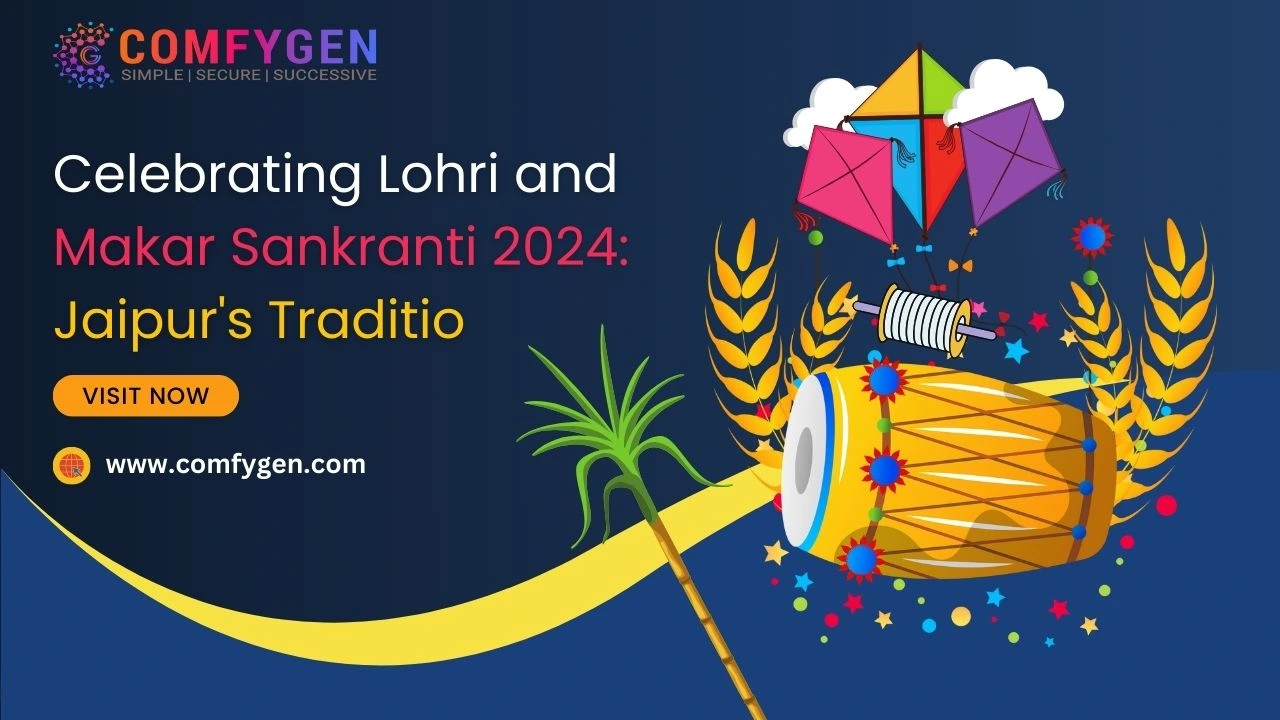Celebrating Lohri🔥 and Makar Sankranti 🪁 2024: Jaipur’s Tradition
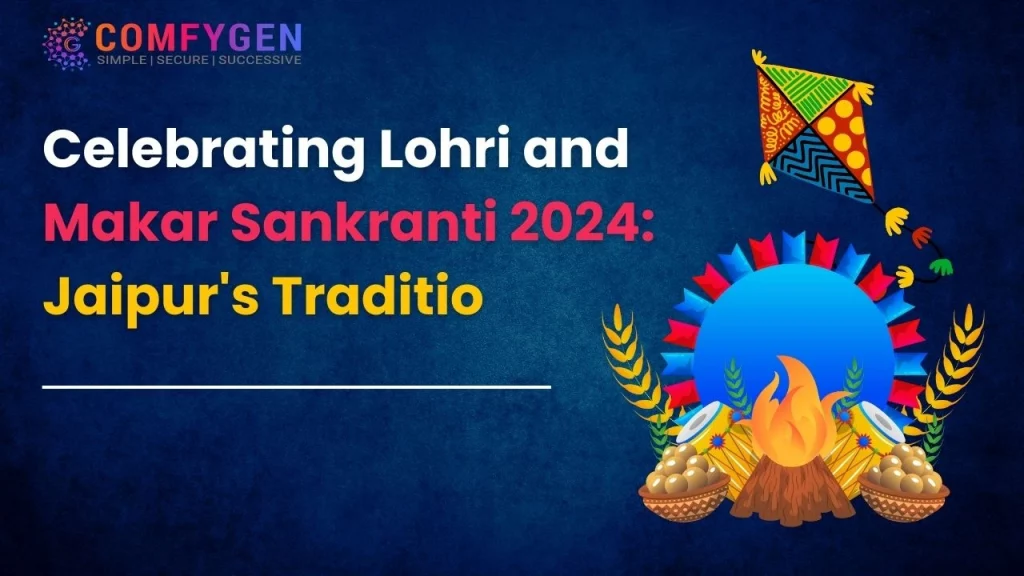
Jaipur, the Pink City, is not just famous for its architecture but also for its people who follow the tradition of every festival generation by generation. People in Rajasthan gather with their families and friends to celebrate these festivals, showcasing the true spirit of the state’s culture.
With winter in the air, we light up bonfires during Lohri and share traditional sweets that make our taste buds dance. During Makar Sankranti, the city is beautifully decorated in pink hues, and people enjoy flying colorful kites. The sky becomes a vibrant and exciting display of kites soaring high. These celebrations not only honor our age-old customs but also show off the unique spirit of unity in Jaipur. It’s a time when we embrace tradition with open arms, creating memories that linger long after the festivities fade away.
What are we taking you through?
- Happy Lohri Ji
- Origin of Lohri
- Lohri 2024 Date
- Dhoom Dhaam Se Lohri in Jaipur
- Makar Sankranti ki Hardik Shubhkamnayein!
- Origin of Makar Sankranti
- Makar Sankranti 2024 Date
- How is Makar Sankranti Celebrated in Jaipur, Rajasthan?
- Let’s Wrap up Reading and Celebrate
Many congratulations on Lohri 🔥
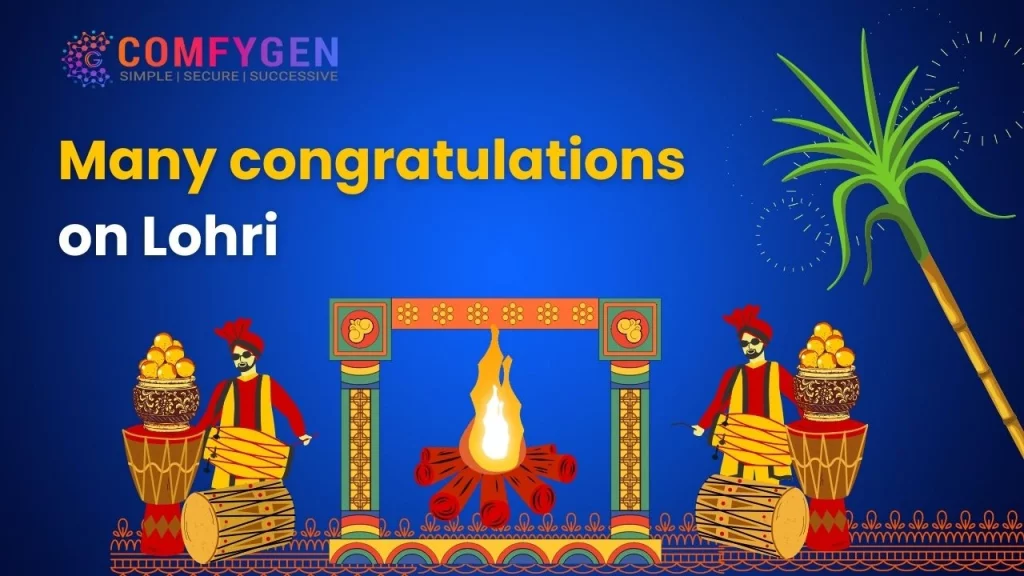
Lohri di lakh lakh vadhaiyan! Lohri ki hardik shubhkamnaye aapko aur aapke parivar ko Comfygen as a leading Blockchain Development Company ki taraf se🙏
Lohri is a traditional festival in Punjab, marking the beginning of the year with gratitude towards farmers for their hard work. The term “Lohri” is thought to originate from the words “loh” (iron) and “ari” (saw). Another belief suggests it comes from “Tilohri,” where “til” means sesame and “rorhi” means jaggery. During the celebration, offerings like gur ki gajjak and til ki rewari are presented to the fire, symbolizing thanks to the Sun God.
It is a customary belief that Lohri, a festival celebrated during the longest night of the year, often recognized as the winter solstice, holds special significance. The main highlight of the celebration involves lighting a bonfire after sunset. This fire is deemed especially auspicious for newlyweds and parents of newborns. Seeking blessings from the Gods, couples and parents perform a circumambulation around the bonfire, making offerings such as Gajjak (a sweet winter snack), popcorn, and puffed rice into the flames. According to Punjab folklore, on Lohri, the flames of the bonfire carry the prayers of the people to the Sun God, who is believed to bless the earth with a fruitful harvest and bring an end to the cold and harsh winter days.
Let’s sing together the legendary Lohri song:
Sunder mundriye ho!
Tera kaun vichara ho!
Dullah Bhatti walla ho!
Dulhe di dhee vyaye ho!
Ser shakkar payee ho!
Kudi da laal patakha ho!
Kudi da saal upata ho!
Salu kaun samete!
Chacha gali dese!
Chaache choori kutti! zamindara lutti!
Zamindar sudhaye!
Bum Bum bhole aaye!
Ek bhola reh gaya!
Sipahee far ke lai gaya!
Sipahee ne mari itt!
Bhaanvey ro te bhaanvey pitt!
Sanoo de de Lohri, te teri jeeve jodi!
Here is the small story about why we celebrate 🔥 Lohri?
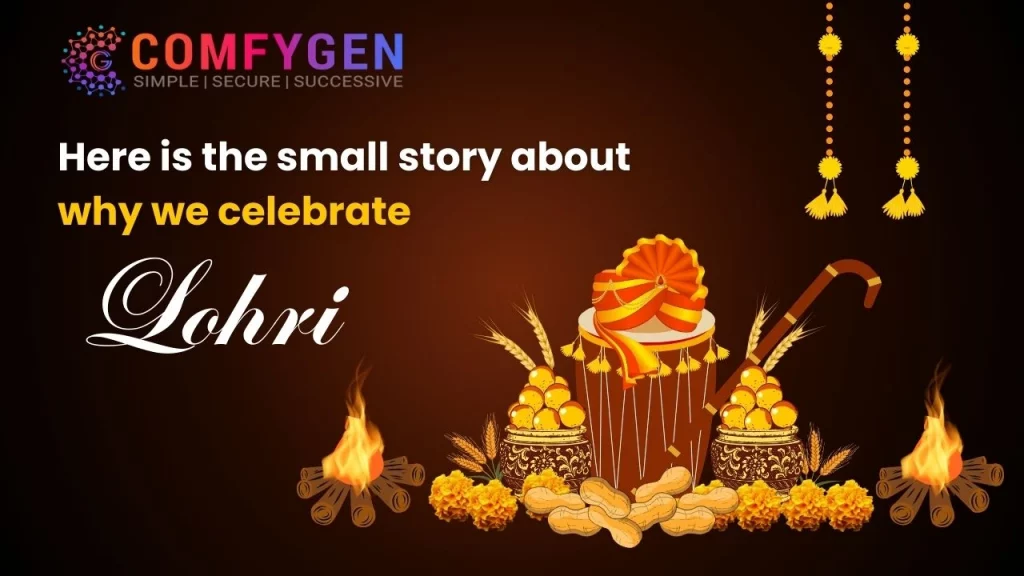
Lohri, a festival celebrated all over Punjab, comes with a fascinating legend featuring Dulla Bhatti as the hero. He was admired for rescuing kidnapped girls and helping them get married. During the joyful Lohri celebrations, a few days before the main event, you’ll find cheerful young boys and girls going door-to-door, singing songs, and gathering goodies like money, sweets, and snacks.
Partaking in certain traditional dishes during Lohri carries both ritual and dietary significance. A prime example is the custom of consuming Sarson ka Saag the day after Lohri. This practice is reflected in the Punjabi saying “Poh Riddhi, Magh Khaddi,” signifying the preparation of saag in the month of Poh and its consumption in Magh, according to the Punjabi calendar.
During the winter month of Lohri, Panjeeri is favored for its nutritious components, including nuts, seeds, and spices like cardamom and cinnamon, known to keep the body warm. Comprising a mix of various nuts, seeds, multigrain flour, jaggery, gondh (edible gum), and ghee, Panjeeri is a rich source of calcium, omega-3 fatty acids, vitamin E, iron, and magnesium. These elements help alleviate body aches while promoting relaxation in muscles and joints. Particularly valued as a nutritional powerhouse for women who have recently given birth, Panjeeri provides essential nutrients for their well-being
The festival becomes an opportunity to create traditional dishes, following recipes passed down through generations as a cherished part of Lohri celebrations. Among the renowned dishes are Sarson ka Saag-Makki ki Roti, Pinniyan, Gur ki Gajjak, Til Laddoos, Panjeeri, and Makhane ki Kheer.
It’s fascinating to learn that Lohri had its place in the grand Lahore Darbar during Maharaja Ranjit Singh’s reign in Punjab. During this celebration, Maharaja Ranjit Singh’s trousseau was reportedly adorned in yellow, and he extended the tradition by directing his close attendants to don similar-colored attire at the Darbar. Additionally, he bestowed robes of honor upon chieftains, vakils, and other nobles on this significant day.
For the people of Punjab, Lohri is more than just a festival; it’s a vibrant celebration of their industry and culture. The enthusiasm surrounding Lohri reflects a deep sense of joy and pride. Interestingly, Lohri aligns with the festivals of Pongal and Makar Sankranti, all sharing a common message of expressing gratitude to the Almighty for the abundance on Earth.
Origin of Lohri 🔥
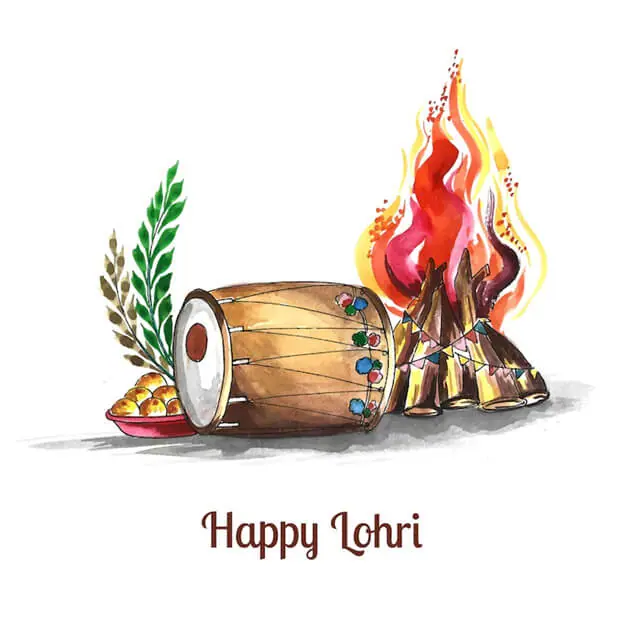
Lohri has many stories about its origins, but a big part of it is linked to celebrating the Winter solstice, which is like the brightening party of the shortest day. The heart of Lohri is the bonfire 🔥, a tradition that goes way back in winter solstice festivities, symbolizing the return of longer, sunnier days.
Lohri is an official holiday in Punjab, Jammu, and Himachal Pradesh, and though it’s celebrated with gusto in Delhi and Haryana, it’s not officially a day off there. What’s cool is that Lohri brings people of different backgrounds together – Sikhs, Hindus, and anyone up for a good time can join in the fun!
Lohri has some great stories behind it, and one of the main ones is about Dulla Bhatti.
Back in Punjab during Akbar’s time, he was a hero for saving Punjabi girls who were being taken to the Middle East as slaves. Imagine that!
There’s another story suggesting Lohri might have come from “Loi,” who was supposedly the wife of Saint Kabir.
And then there’s the idea that the name comes from “Loh,” which means the warmth and light you get from a fire.
So, whether it’s heroic tales or warm and bright vibes, Lohri got it all!
Lohri 2024 Date
Sun, 14 Jan, 2024
Dhoom Dhaam Se Lohri in Jaipur
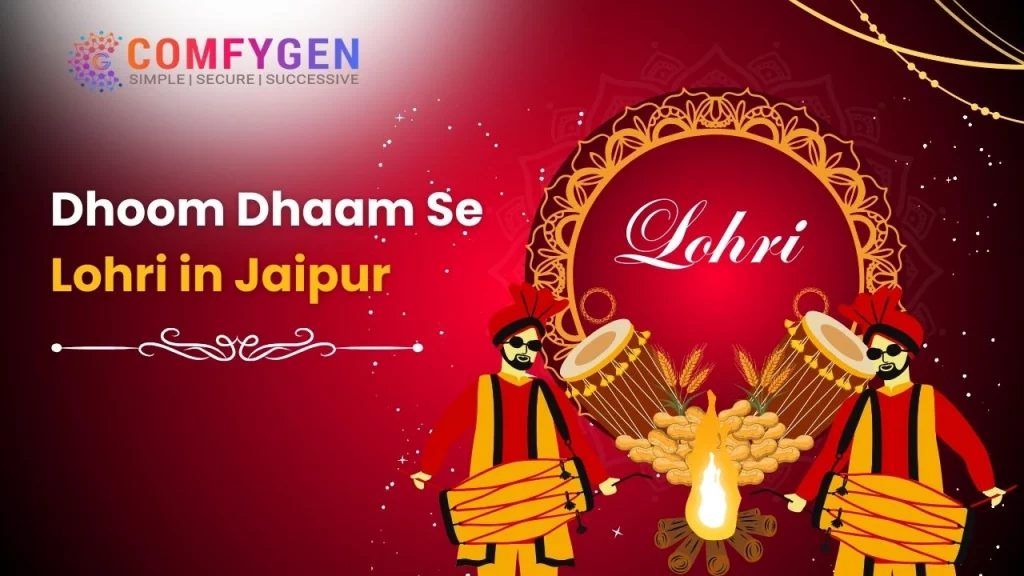
Lohri is a joyous celebration in our vibrant pink city, filled with lively festivities. The festival paints a beautiful picture of people, friends, and families adorned in vibrant attire, coming together to sing and dance to the beats of drums around a bonfire. In Jaipur, the Punjabi community, particularly in areas like Raja Park and Malviya Nagar, has been gearing up for Lohri for the past few days and is eagerly anticipating the spirited bonfire tonight!
Beyond the lively Bhangra dance, Lohri celebrations involve a cheerful tradition of tossing sweets, puffed rice, peanuts, and popcorn into the flames, symbolizing the release of worries and grievances. While singing popular folksongs and exchanging warm greetings, everyone engages in this symbolic act. And, of course, what’s a festival without delicious food?
Being Punjabi, the highlight is the scrumptious and traditional winter dinner featuring makki-di-roti (millet bread) and sarson-da-saag (cooked mustard greens). For a sweet touch or meetha, sesame seeds or Til play a vital role in Lohri celebrations. Indulging in Til in various forms, such as Til ke laddoo, is not only considered auspicious for the festival but also a treat for the taste buds!
The International Kite Festival, organized by the Jaipur Tourism Development Corporation, takes place annually at a local stadium. This event attracts kite enthusiasts from around the world, showcasing their skills. The festival features a vibrant kite market, accompanied by food stalls, cultural performances, and special kite displays at night. During the illuminated kite displays, known as Tukals, participants fly kites, creating a captivating spectacle (14th January – 16 January 2014).
Adding to the excitement of kite flying is a delectable spread of food, including dal ke pakode, peanut chikkis, jaggery (gur), and various other delights!
🪁Makar Sankranti ki Hardik Shubhkamnayein! 🪁
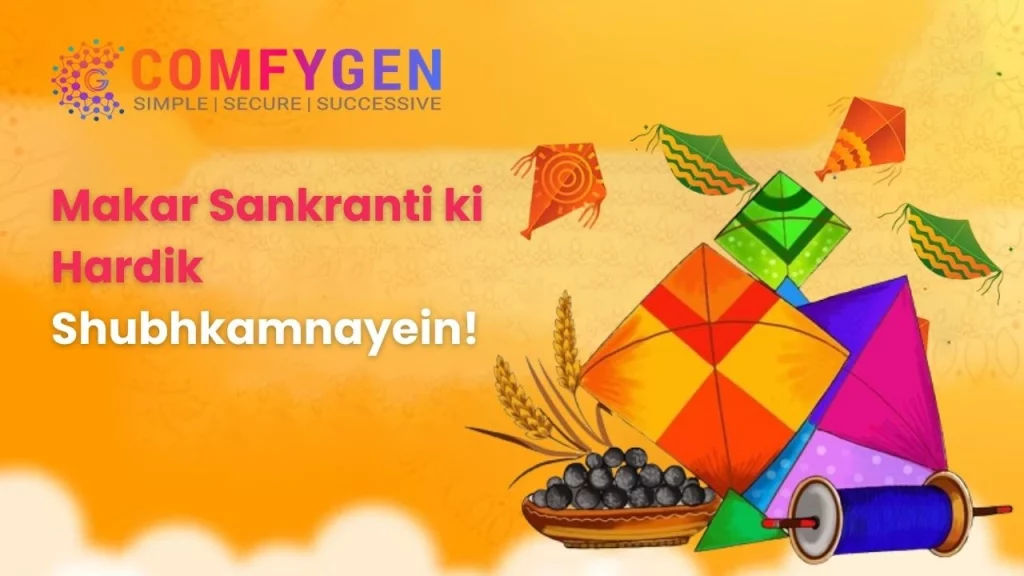
Khamma Ghani! Makar Sankranti ki hardik shubhkamnayein aapko aur aapke parivaar ko Comfygen ki taraf se🙏 🪁
Makar Sankranti holds great significance as a festival in India. The term “Sankranti” translates to “movement,” emphasizing the essence of life being in constant motion. It’s essential to recognize that those who came before us have moved on, and those who follow us are awaiting their turn to move forward – this is a natural cycle. The Earth itself is in constant motion, fostering life through this movement. If the planet were motionless, life wouldn’t thrive.
Consider that all living beings are part of this universal movement. However, for movement to occur, it needs a foundation of stillness. The interplay of movement and stillness is crucial for a fulfilling life. Failing to tap into the stillness within oneself can lead to being overwhelmed by the constant movement around us.
In simpler terms, Makar Sankranti reminds us of the balance between movement and stillness. It encourages us to embrace the stillness within and around us, ensuring a harmonious existence. Just like the celebration of this festival, let’s find joy in the dance of life while appreciating the moments of calmness that allow us to navigate the journey smoothly.
Movement is delightful, but there’s a limit to its charm. Think of our lovely planet gracefully gliding through the changes of seasons – that’s the sweet spot. However, imagine if it suddenly decides to speed up even a bit; our seemingly calm minds would go haywire, and everything would spiral into chaos. So, while movement has its beauty, it can turn into a bit of a hassle when it goes beyond a certain point. It’s like enjoying a merry dance, but if the pace gets too fast, it’s no longer enjoyable – it becomes a bit of a challenge.
Makar Sankranti stands out as the sole Hindu festival aligned with the solar calendar, a departure from the lunar-based celebrations. This festive occasion marks the sun’s transition from the Southern to the Northern Hemisphere, symbolizing a propitious period. “Makar” translates to ‘Capricorn,’ and “Sankranti” signifies ‘transition.’ The astrological phenomenon during Makar Sankranti is referred to as ‘Maha-snana-yoga.’
Many individuals observe the festival by partaking in the tradition of bathing in rivers and lakes, particularly at the confluence of sacred rivers. Beyond its solar significance, Makar Sankranti doubles as a harvest festival, a time to rejoice and express gratitude to Mother Earth as winter begins to wane. Gift-giving is a common practice during this period, with traditional sesame sweets, known as “til,” being popular presents.
Celebrations extend to feasts, featuring a dish crafted from green gram, rice, and jaggery. Makar Sankranti encapsulates the joy of embracing nature’s cycles and fostering a sense of community through shared festivities.
Traditional Significance of Makar Sankranti🪁
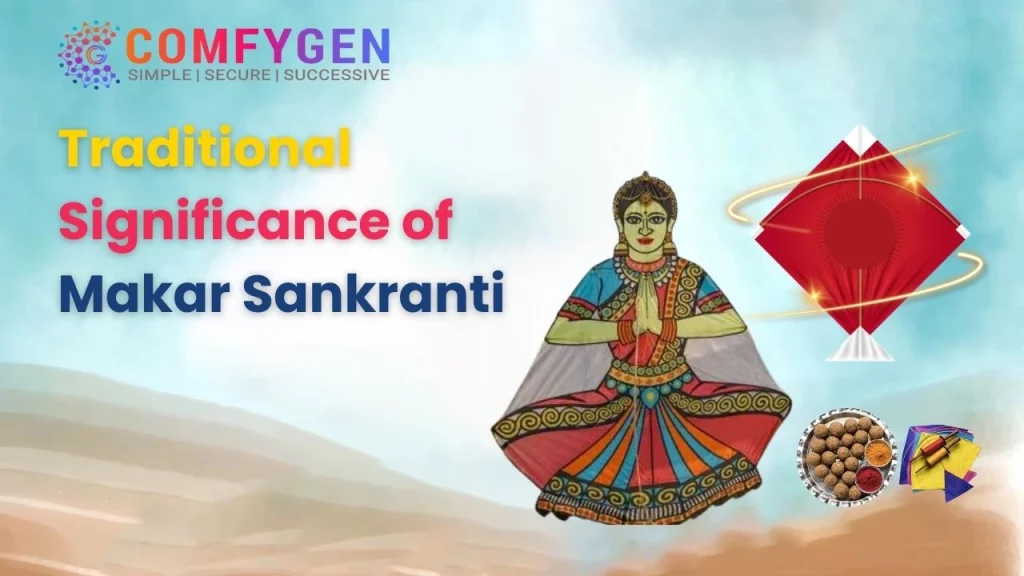
According to Hindu beliefs, Makar Sankranti marks the victory of Lord Vishnu over demons, as he defeated them by severing their heads and burying them under a mountain. This event symbolizes the triumph of positive forces over negativity, paving the way for a life filled with goodness and prosperity.
The day is considered auspicious for Sadhana, a spiritual practice or meditation, as it is believed that the environment is enriched with ‘Chaitanya’ or cosmic intelligence.
Makar Sankranti Pooja & Significance:
Beyond its importance in agriculture, Makar Sankranti involves special prayers dedicated to the Sun God, symbolizing the triumph of light over darkness. Devotees participate in rituals to express gratitude and seek blessings for a fruitful harvest, marking the Sun’s positive transition into the Northern Hemisphere.
The Morning Ritual:
Ancient scriptures suggest waking up just before sunrise on Makar Sankranti for a positive start to the day. It is advised to add a small amount of Til or Sesame Seeds to bathing water. After the bath, devotees offer prayers to the Sun by chanting the Gayatri Mantra and performing Argya, symbolizing the offering of water to the Sun.
Deity Worship on Makar Sankranti:
Despite various stories surrounding the Sankranti festival, it is commonly believed that the Sun represents “Pratyaksha-Brahma,” a manifestation of the absolute, bestowing knowledge, spiritual light, and wisdom. As a special festival celebrated nationwide.
Origin of Makar Sankranti 🪁
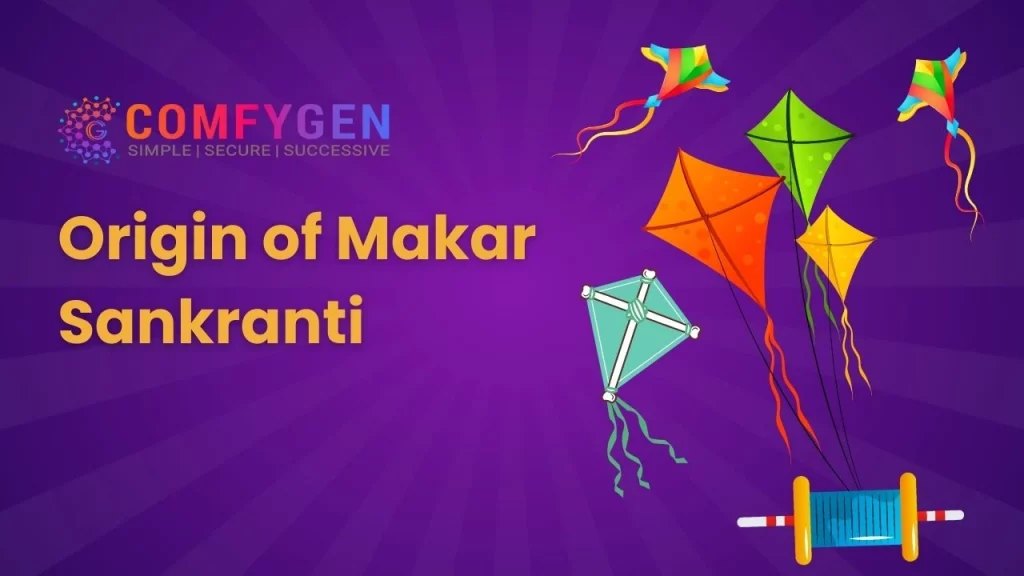
The Makar Sankranti festival has a cool backstory that goes way back, mixing old traditions, exciting myths, and some serious farming vibes.
So, here’s the deal: way back when, people in India were super into the whole stars and crops scene. Makar Sankranti happens when the sun switches to Capricorn, saying bye to winter and giving us longer days. For the farmers of old, this was a big deal – time to party and thank the farming gods for a killer harvest.
On the religious side, Makar Sankranti is like an epic showdown from Hindu stories. Picture this: Lord Vishnu takes down the demon Sankarasura, showing that good guys finish first. To celebrate, folks do prayers, rituals, and maybe take a dip in a holy river for good measure. It’s a cool mix of old traditions and awesome stories, making Makar Sankranti a pretty rad and meaningful bash for everyone.
Over the years, the Makar Sankranti festival has changed things up a bit, embracing different local styles. In Punjab, it’s all about Lohri – think bonfires, classic dances, and swapping tasty treats. Meanwhile, down in Tamil Nadu, it becomes Pongal, a four-day party celebrating the harvest.
Makar Sankranti has really woven itself into the cultural fabric of India. Take kite-flying, for example, brought in during the medieval Mughal period – now, it’s a big part of the festivities, symbolizing freedom and good times.
As we dig into the history of Makar Sankranti, it’s clear that this festival is like a symbol of India’s lasting traditions. From the traditions rooted in agriculture and the stars to the joy of flying kites, it shows how these practices have stuck around through the ages, linking the past and the present.
🪁Makar Sankranti 2024 Date
Mon, 15 Jan, 2024
How is 🪁Makar Sankranti Celebrated in Jaipur, Rajasthan? 🪁
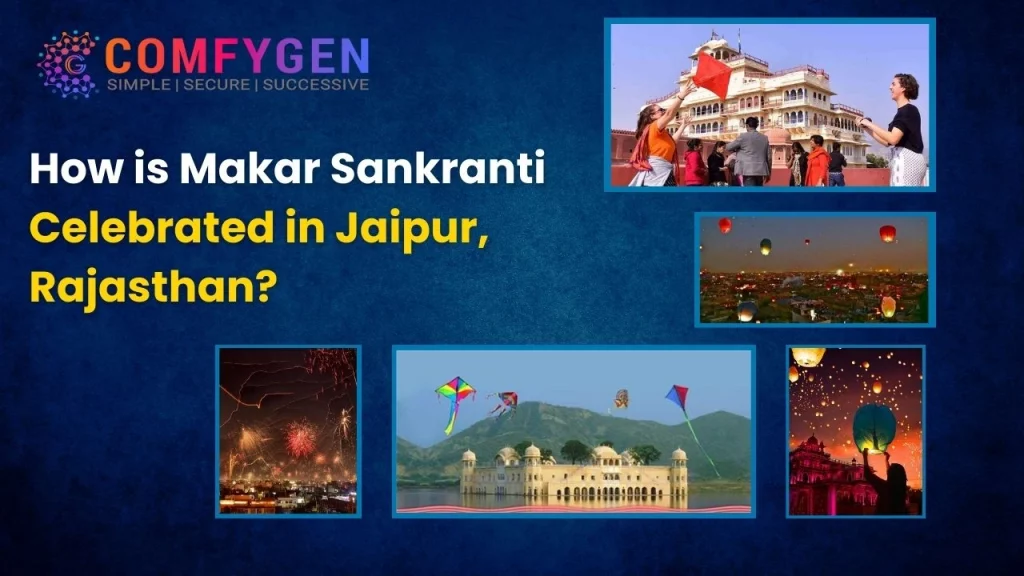
Makar Sankranti” or “Sakraant” in the Rajasthani language is one of the major festivals in the state of Rajasthan. The day is celebrated with special Rajasthani delicacies and sweets such as pheeni (either with sweet milk or sugar syrup dipped), til-patti, gajak, kheer, ghevar, pakodi, puwa, and til-laddoo.
Specially, the women of this region observe a ritual in which they give any type of object (related to household, make-up or food) to 13 married women. The first Sankranti experienced by a married woman is of significance as she is invited by her parents and brothers to their houses with her husband for a big feast. People invite friends and relatives (specially their sisters and daughters) to their home for special festival meals (called as “Sankrant Bhoj”). People give out many kind of small gifts such as til-gud (jaggery), fruits, dry khichadi, etc. to Brahmins or the needy ones.
Kite flying is traditionally observed as a part of this festival. On this occasion the sky in Jaipur and Hadoti regions is filled with kites, and youngsters engage in contests trying to cut each other’s strings.
The Kite Festival in Jaipur, also known as Makar Sankranti, holds a special spot in Jaipur’s festival lineup – it’s one of the city’s grandest celebrations.
Get ready to soak in the festive vibes of the auspicious Kite Festival, which announces the arrival of spring with countless kites, colorful threads, delicious food, lively music, and a burst of vibrant Indian culture.
We’ve crafted a full-day experience for our guests to dive into the festivities alongside a local family. With a bunch of kites, colorful threads, tasty treats, and music, families gather on open rooftops to bask in the sunshine and engage in epic “Kite Wars.” It’s a day where kids hustle to score an invite to a friend’s or a local’s terrace for an all-day kite-flying picnic.
Marvel at the sky filled with a variety of kites, showcasing cartoons, celebrities, and even bureaucrats. Enjoy the friendly competition, with DJ music echoing through the streets and groups vying to outdo each other. It’s a fantastic spectacle you won’t want to miss!
Let’s Wrap up Reading and Celebrate
In short, Lohri and Makar Sankranti are not only important but graceful festivals in not only Punjab and Rajasthan but everywhere in India. Lohri brings warmth with bonfires, while Makar Sankranti marks the sun’s transition, symbolizing new beginnings.
As we enjoy festive treats and traditions, let’s cherish moments with loved ones. “लोहड़ी और मकर संक्रांति के इस खास मौके पर, आप सभी को ढेर सारी शुभकामनाएं!”
May the glow of Lohri and the longer days of Makar Sankranti bring happiness and prosperity. Here’s to a year filled with positivity and togetherness. Happy Lohri and Makar Sankranti! 🌟

